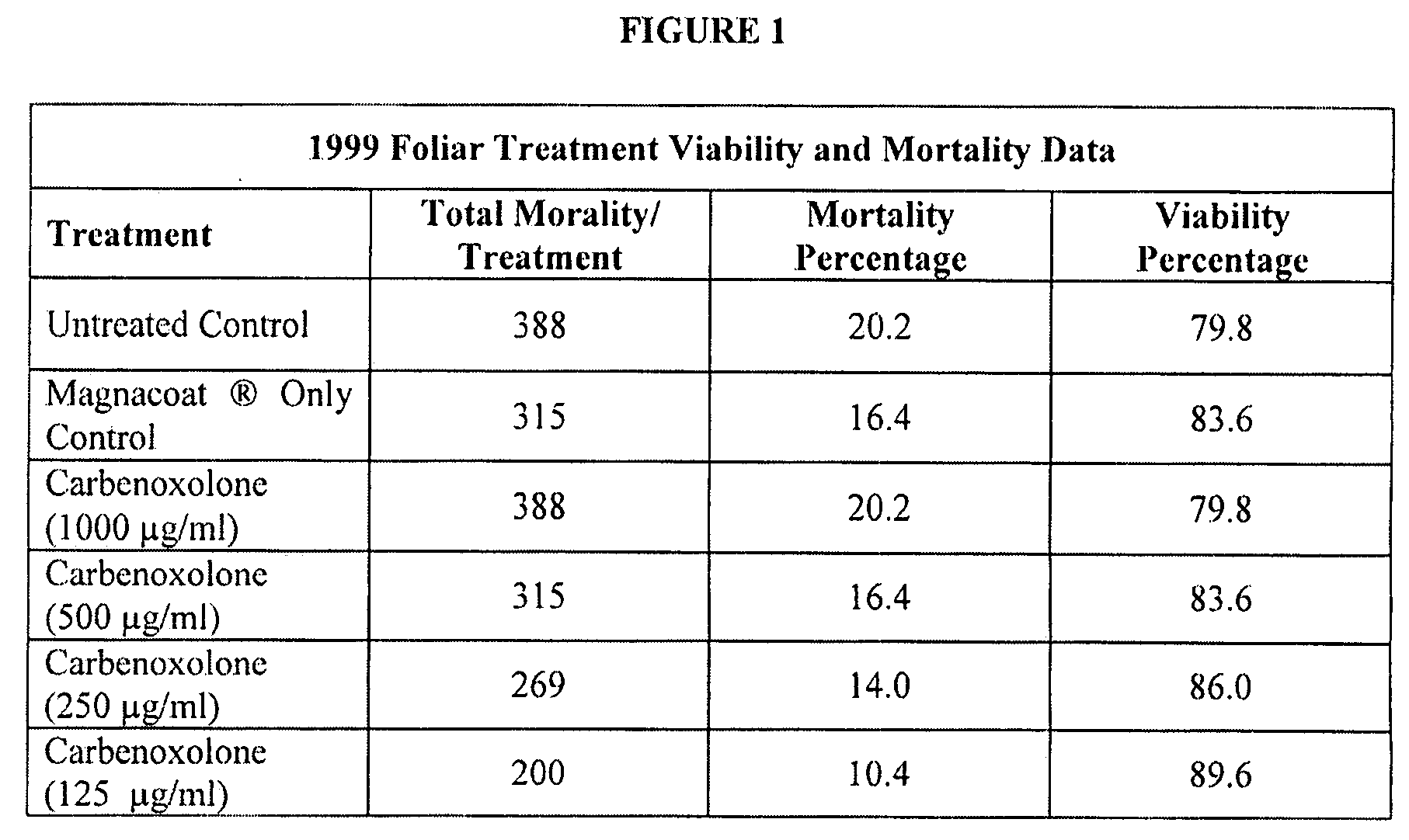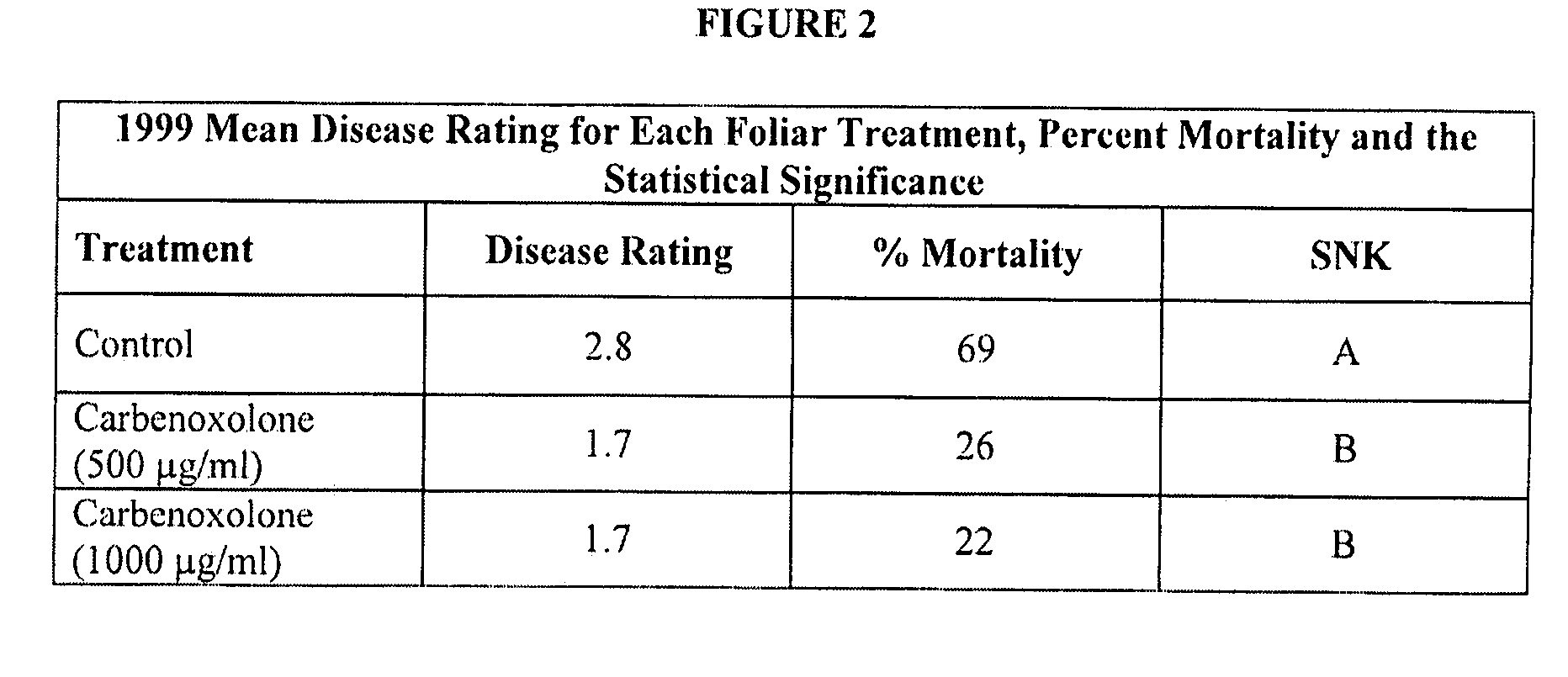Methods and Compositions for the Management of Soil Borne Fungal Diseases
a technology for soil borne fungal diseases and compositions, applied in the direction of fungicides, anhydrides/acids/halides, biocide, etc., can solve the problems of increasing the risk of infection of soybeans in the field, loss of yield, and the difficulty of fungal diseases to control and manage, so as to reduce the risk of fungal diseases
- Summary
- Abstract
- Description
- Claims
- Application Information
AI Technical Summary
Benefits of technology
Problems solved by technology
Method used
Image
Examples
Embodiment Construction
[0034]The methods and compositions discussed herein are merely illustrative of specific manners in which to make and use the invention and are not to be interpreted as limiting in scope.
[0035]While the methods and compositions have been described with a certain degree of particularity, it is to be noted that many modifications may be made in the details of the methods and compositions construction and the arrangement of their components without departing from the spirit and scope of this disclosure. It is understood that the methods and compositions are not limited to the embodiments set forth herein for purposes of exemplification.
[0036]As used herein, “plant” is intended to refer to any part of a plant, e.g., roots, foliage, shoots, stems, as well as tree, shrubbery flowers and grasses. “Seed” is intended to include seeds, tubers, tuber pieces, bulbs, etc., or parts thereof from which a plant is grown.
[0037]The time required for plant emergence depends on planting depth, vigor, so...
PUM
| Property | Measurement | Unit |
|---|---|---|
| Flow rate | aaaaa | aaaaa |
| Solubility (mass) | aaaaa | aaaaa |
Abstract
Description
Claims
Application Information
 Login to View More
Login to View More - R&D
- Intellectual Property
- Life Sciences
- Materials
- Tech Scout
- Unparalleled Data Quality
- Higher Quality Content
- 60% Fewer Hallucinations
Browse by: Latest US Patents, China's latest patents, Technical Efficacy Thesaurus, Application Domain, Technology Topic, Popular Technical Reports.
© 2025 PatSnap. All rights reserved.Legal|Privacy policy|Modern Slavery Act Transparency Statement|Sitemap|About US| Contact US: help@patsnap.com



